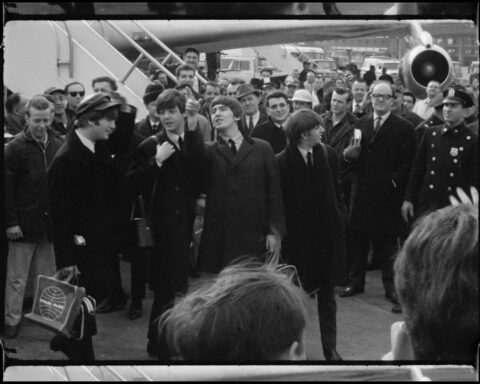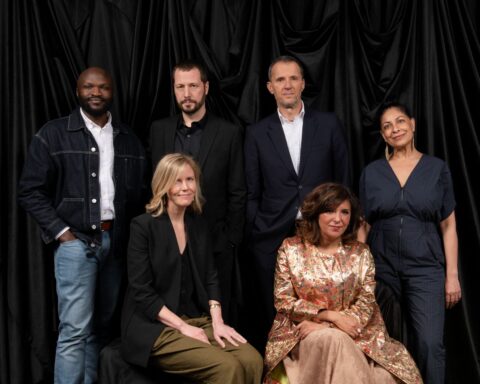There are more than a few dramatic directors who also excel at making non-fiction films about music. Martin Scorsese is an obvious example, as is Jonathan Demme with his many collaborations with Neil Young. Moreover, simply look at the likes of Spike Lee and how his American Utopia provided an aesthetic vigour that trumped many of his recent fiction works and you can see both the lure and the possibility for something extraordinary to happen when music docs are helmed by filmmakers with a strong background in narrative storytelling.
Todd Haynes, for example, has bent the very notion of the music film in fascinating ways right from the start with his 1987 film Superstar: The Karen Carpenter Story. His original short used Barbie dolls and a whole lot of unverified rumours to tell a disturbing yet engaging tale of the troubled singer. His drama Velvet Goldmine fictionalized the lives of David Bowie, Lou Reed and others during the early 1970s glam era to mixed results. His I’m Not There, an astonishing and complex dive into Dylanology, fractured the singer’s mythmaking into several disparate pieces with actors ranging from Richard Gere to Cate Blanchett portraying Dylan, coming at the mercurial subject in ways as poetic, fragmented and fascinating as the subject it focused upon.
While not quite as avant garde as I’m Not There, and not nearly as haphazard as Goldmine or acerbic as Superstar, Haynes’ Velvet Underground is his first feature documentary. Through interviews and archival footage, he tells the tale of this late-1960s band and their incorporation into the milieu of New York’s art scene, a constellation of misfits, miscreants, hangers-on, and hungry artists with Andy Warhol as the celestial body around whom everything orbited.
While superficially a straight-up rockdoc, Haynes manages something truly exceptional by using the very aesthetic underpinnings of Warhol’s cinema to dissect both the myths and the facts that surrounded the band layer by layer. While never giving short shrift to members such as guitarist Sterling Morrison, drummer Moe Tucker, and auxiliary singer Nico, the central protagonists are the yin/yang pair of Lou Reed and John Cale.
While Reed has been dead for some time, his impact on the documentary remains vast as the most celebrated member of the group given his extensive solo career and his role as lead singer. I’ve heard talk that somehow he’s given short shrift here, which is laughable if only due to the fact that, for many, the Velvets were simply Reed’s backing band.
What’s more fascinating, to the annoyance of some viewers who actually wish to diminish his historical contributions, is the inclusion of John Cale’s introspective reminisces about his time with the band. While Reed brought a garage rock with a penchant for poetry, Cale’s classically trained ethos saw in the simplicity of late-60s psych an overlap to experiments in contemporary classical, especially those looking to extend past John Cage’s experimentalism into the more drone-oriented, long-form musical pieces from the likes of La Monte Young and his Theatre of Eternal music.
These ingredients made the Velvets for many, whether overtly or not, a far more interesting ensemble than many that littered the scene at the time. It certainly didn’t hurt that they became inexorably linked to Warhol and his “scene,” but even decades hence, their music resonates in no small part because of the collision between Reed and Cale’s aesthetics, the former read as far more emotional and raw, the other a more cerebral yet no less engaging aspect.
What then makes Haynes’ film so fascinating is that it uses these paradoxical elements in the telling of the story, bouncing between ribald tales of Reed’s Rimbaud-fueled storytelling, through to Cale’s contributions with carefully calibrated cacophony. The film does wonders to show that the differences between these two very different men gave much of the electrifying power to the band’s impact. Similarly, by using Warhol’s films in which static shots encourage people to look closer and be swayed by the repetition, and in the case of the music to hear the general overtones that creep into the held notes that emerge after sublimating to the drone’s impact, Haynes demonstrates how rather than simply being a house band there to entertain the hordes of sycophants and drugged-out idiots that littered Warhol’s gatherings, the Velvets were an extension of the general artistic project, as integral as any soup can or Marilyn portrait.
As Haynes uses split screen to contrast directly the overt telling of the story with what was captured during the time, the result is a trippy yet always coherent dive into the past, without ever succumbing to any nothing merely nostalgic. Both Cage and Reed were self-admitted assholes, while Warhol himself was even more difficult to pin down, and the film spends more than enough time showcasing the petty rivalries that consistently overwhelmed any artistic achievements.
Yet its Haynes’ capacity to bring us into the world of the Velvets using the mechanism of their artistic expression that makes us appreciate what they accomplished. The film itself is a kind of drone, with elements repeated, but each time you get something slightly more out of it, a general sense that the closer you look the more there is to experience. Instead of merely being hypnotic to the point of being chaotic, Haynes firmly holds on the reins, taking us along for the ride while still delivering plenty of footage to be wowed by and music to lull us.
If the test of any great music doc is whether it elevates its subject through craft, and doesn’t simply rely upon the success of its subject to drive its narrative power, then Haynes’ film is quite simply one of the best of the breed. You can despise the Velvet Underground and still get plenty out of the film, just as if you think you’ve heard every story a million times before, you’re going to get plenty out of this telling. This is easily a definitive portrait of the band, but above that, it feels like the Velvets’ last testament, a kind of meta-recording that can easily sit on the shelf beside the Banana album and the rest as part of their output.
Working within the confines of a conventional documentary, Haynes brings his unique narrative skill while providing his most accessible music work yet. If there are other artists that he could set his keen eye on, another rockdoc would be a more than welcome event. At the least, Velvet Underground is an enormous achievement, one that manages to take all of Haynes’ gifts and channel them into a subject matter that’s worthy of his attention.
The Velvet Underground premiered at the 2021 Cannes Film Festival and debuts of AppleTV+ on October 15.














